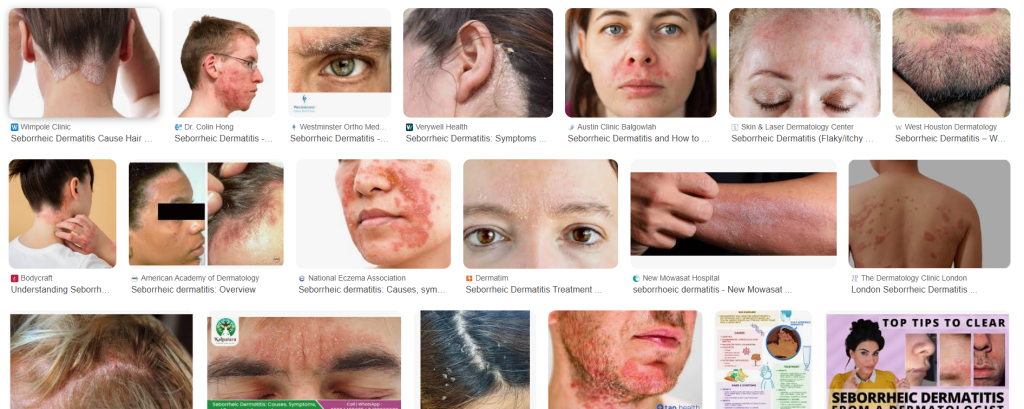
Seborrheic Dermatitis: A Comprehensive Guide
Seborrheic dermatitis is a common chronic inflammatory skin condition that primarily affects areas with a high concentration of sebaceous glands, such as the scalp, face, and upper body. It’s characterized by flaky skin, itching, and redness.
Symptoms
Common symptoms of seborrheic dermatitis include:
- Flaky, scaly skin (dandruff when on the scalp)
- Redness and inflammation
- Itching and burning sensation
- Greasy, oily patches
- Yellow or white scales on top of reddish skin
- In severe cases, crusting and oozing
Causes
While the exact cause is unknown, several factors are believed to contribute:
- Malassezia yeast: An overgrowth of this naturally occurring skin fungus may trigger inflammation.
- Sebum production: Overactive oil glands can create an environment conducive to yeast growth.
- Genetic predisposition: Some individuals may be more susceptible to developing the condition.
- Immune system: An abnormal immune response may play a role.
- Hormonal changes: Fluctuations in hormones can affect sebum production.
Risk Factors
Certain conditions and factors can increase the risk of developing seborrheic dermatitis:
- Neurological conditions (e.g., Parkinson’s disease)
- Immunosuppression (e.g., HIV/AIDS)
- Stress and fatigue
- Cold, dry weather
- Certain medications
Treatment
Treatment for seborrheic dermatitis aims to manage symptoms and prevent flare-ups. Options include:
Over-the-counter treatments:
- Antifungal shampoos containing:
- Ketoconazole
- Selenium sulfide
- Zinc pyrithione
- Salicylic acid
- Medicated creams or lotions with:
- Hydrocortisone
- Ketoconazole
- Ciclopirox
Prescription medications:
- Stronger antifungal agents:
- Ketoconazole (higher strength)
- Ciclopirox olamine
- Topical corticosteroids:
- Betamethasone
- Desonide
- Fluocinolone
- Calcineurin inhibitors:
- Tacrolimus
- Pimecrolimus
- In severe cases, oral antifungals may be prescribed.
Natural Remedies
Some natural treatments that may help manage symptoms include:
- Tea tree oil shampoo
- Aloe vera gel
- Apple cider vinegar rinses
- Probiotics (both topical and oral)
- Fish oil supplements
Lifestyle Management
To help control seborrheic dermatitis:
- Practice good hygiene, washing affected areas regularly
- Manage stress through relaxation techniques
- Avoid harsh soaps and skin products containing alcohol
- Use a humidifier in dry environments
- Eat a balanced diet rich in anti-inflammatory foods
When to See a Doctor
Consult a dermatologist if:
- Symptoms persist despite over-the-counter treatments
- The condition is causing significant discomfort or embarrassment
- You develop signs of infection (increased redness, warmth, or pus)
Remember, while seborrheic dermatitis is a chronic condition, it can be effectively managed with proper treatment and care. Always follow your healthcare provider’s advice and be patient, as it may take time to find the most effective treatment for your individual case.